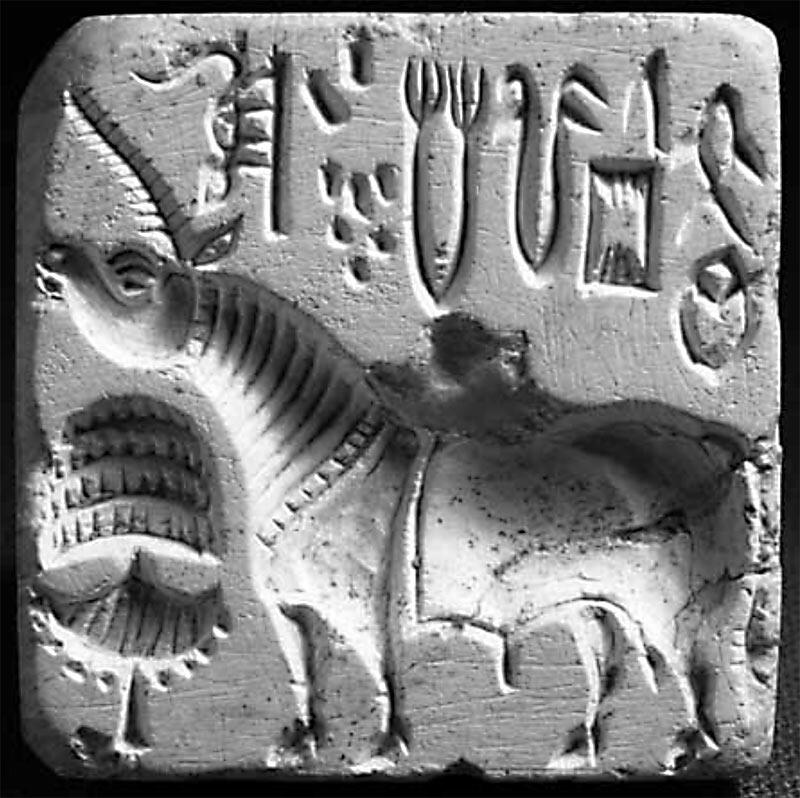Above: Antelope-like unicorn on seal Nd-1 from Nindowari (after CISI 2: 419)
"My conclusion," writes the Indus script scholar Asko Parpola, "is that the Indian Rsyasrnga legend goes back to the Harappan religion, where the unicorn bull depicted on thousands of seals has a real local animal, the nilgai antelope, called rsya in Sanskrit. His single horn, the length of which is exaggerated, has a phallic connotation and emphasizes the importance of this animal as a symbol of fertility. His cult purported to secure abundant rains that were vital for agriculture and animal husbandry, the foundations of Harappan economy. Such a role can best explain the overwhelming popularity of the unicorn as the favorite deity of many Indus seals owners." (p. 168)
This comprehensive article examines the figure of the unicorn in different historical contexts including the Greeks, Mesopotamians and other West Asians, and local Indian mythological and actual creatures to arrive at the author's startling conclusion, for which it can be said, there have been other supporters and which, at the very least, should cause those who may disagree with Dr. Parpola's thesis, to reflect on the antelope-characteristics of the so-called unicorn.
Abstract
The most frequently occurring iconographic motif of the Indus seals, with thousands of occurrences, is a unicorn bull, a male bovine animal with a single horn. Its exact zoological identity is still controversial, but while some scholars consider it to be a purely fabulous beast, perhaps a conflation of two or more real species, many authorities consider it to represent either the humpless wild cow called aurochs or urus (Bos primigenius) or the humpless taurine cow (Bos taurus). The religious meaning of the Harappan unicorn has remained unclear as well. The present study tries to solve this problem by considering both Eurasian unicorn myths and those which are particular to South Asia, as well as their historical evolution and context. The evidence strongly suggests that the Harappan unicorn was an integral part of this unicorn mythology, that it stood for male creative power, and that its cult purported to secure rain and fertility for purposes of agriculture and animal husbandry. The Harappan unicorn was probably originally the humpless bull of Western Asia, and then transformed in the Indus Valley into an image of the blue bull, the nilgai antelope (Boselaphus tragocamelus).
Originally published in Linguistics, Archaeology and the Human Past, Edited by Toashiki Osada and Hitoshi Endo, Indus Project, Research Institute for Humanity and Nature, Kyoto, Japan, 2011, pp. 125-188.

